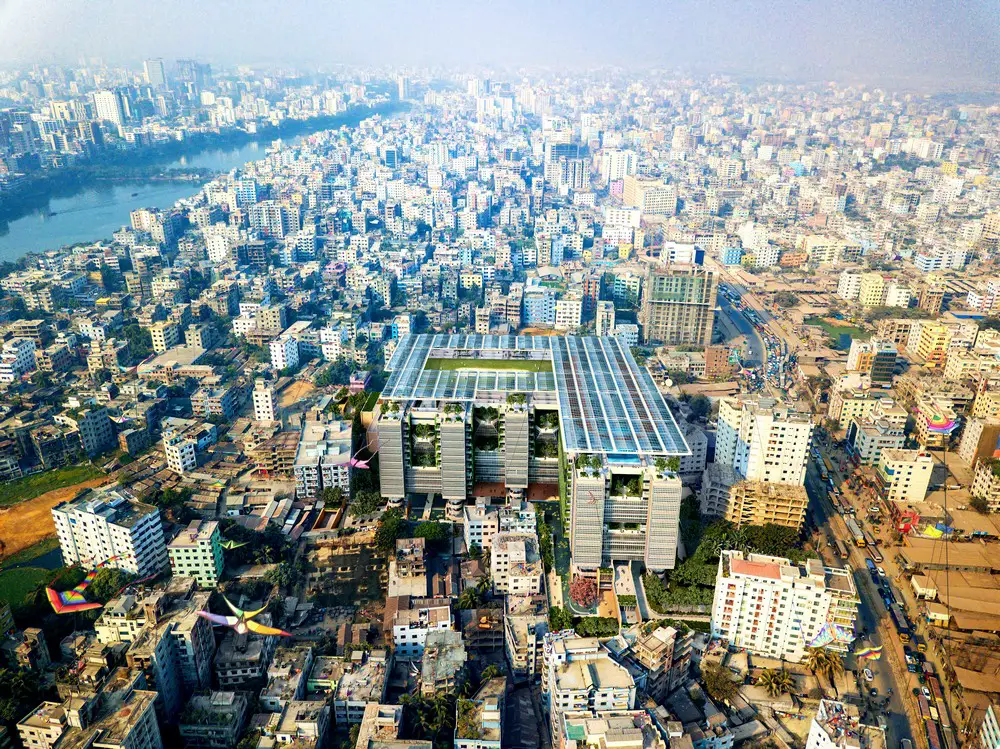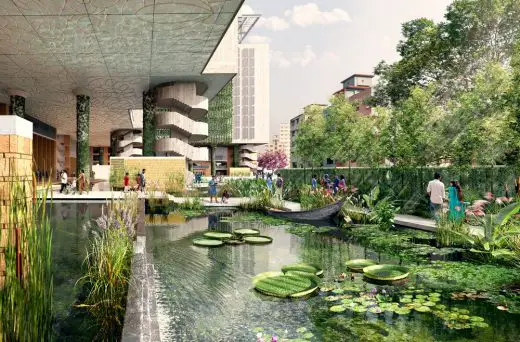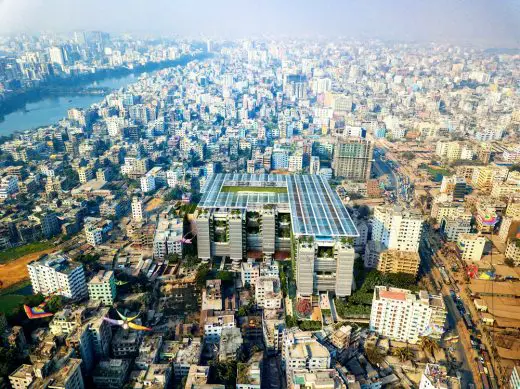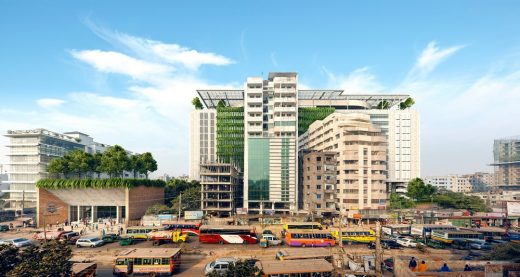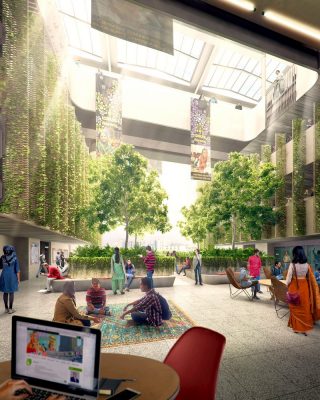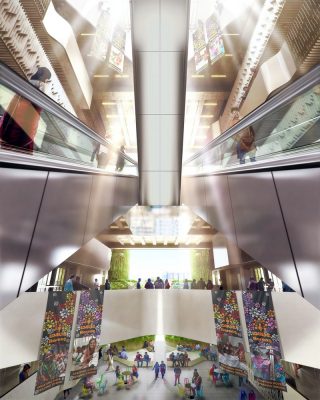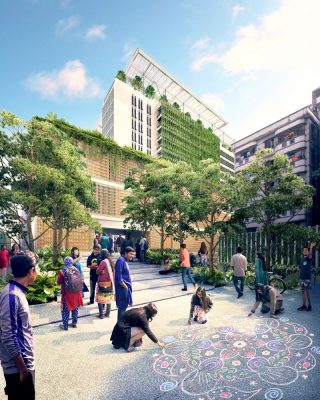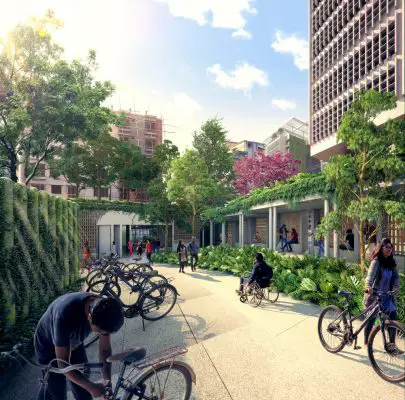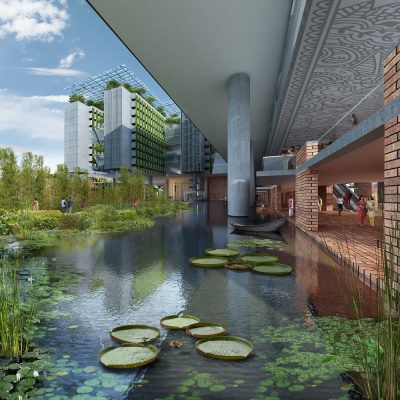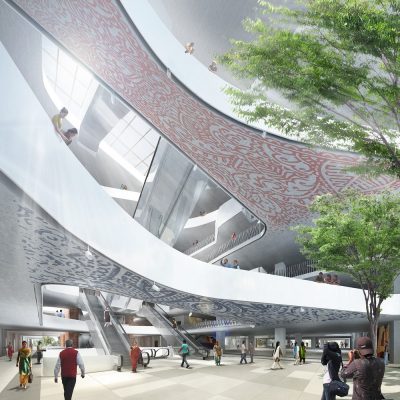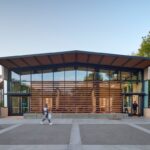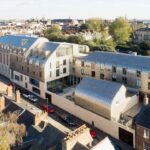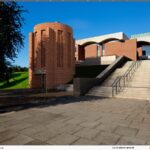BRAC University Bangladesh Building, Dhaka Architecture Images, WOHA Inner-City Campus Design
Sustainable Inner-City Campus in Dhaka, Bangladesh
8 Mar 2020
Architects: WOHA
Location: Dhaka, Bangladesh
Renderings by WOHA
Sustainable Inner-City Campus and Public Park in Bangladesh
WOHA and BRAC University Release New Renderings of Sustainable Inner-City Campus and Public Park in Dhaka, Bangladesh.
Transforming a polluted swampland into a 5.3-acre university campus, WOHA’s design creates a new model for sustainable development in the region and tropical spaces that do not require full air conditioning.
Dhaka, Bangladesh – Singapore-based architecture firm WOHA has released new renderings of the BRAC University campus and public park in Dhaka, Bangladesh, currently under construction and slated for completion in 2021. An extension of BRAC, the largest non-governmental organization (NGO) in the world, BRAC University was established in 2001 and aims to instill in its students a commitment to working towards national development and progress. This mission is reflected in WOHA’s new campus design for the university, which will transform a former communal rubbish dump into a livable, tropical, and sustainable inner-city campus and public park.
Drawing inspiration from the region’s Sundarbans, which have separate ecosystems above and below tidal level, WOHA’s 950,000 square foot design for the campus is divided into two distinct programming strata: a private “Academia” raised canopy for learning and the ground-level public “Campus Park” created by remediating the existing swamp into a bio-retention pond with lush native landscaping. As the heart and social nucleus for over 10,000 students and the wider community, the lower stratum will act as a gathering place complete with the University’s auditorium, multi-purpose hall, and public gallery. The “Academia” will shelter the “Campus Park” from Dhaka’s strong sun and heavy monsoon rains, while water-enhanced evaporative cooling will further reduce the ambient temperature, creating a comfortable micro-climate.
With space at a premium due to Dhaka’s urban density, the roof will serve as the “University Green,” a large recreation sky park that accommodates a recreational field, a swimming pool and a 200m running track under the shade of a large photovoltaic (PV) solar canopy. The solar energy harvested will power giant High Volume Low Speed (HVLS) fans, common area lighting, and student laptops.
WOHA’s design for BRAC University employs architectural and environmental strategies that will achieve a new model for sustainable development in the region and university campuses worldwide. Innovative adaptive cooling strategies developed with world-class engineers and sustainability consultants will create tropical learning spaces that do not require full air conditioning, while a matrix of sun-shading fins and vertical green walls address solar heat gain. The building’s green facades – composed of simple, low cost technology – translate to more than 280,000 square feet of landscaping and act as environmental filters that cut out glare and dust, help keep rooms cool, and dampen traffic noise.
In section, WOHA’s design reveals how a visually connected series of vertical spaces promote a learning environment that breathes. Open and airy, yet sheltered from the sun and rain, WOHA’s ‘single-room-thick’ floor plans further facilitate cross ventilation and daylighting to every classroom. Based on a 9×9-meter structural module, all rooms are flexible and can combine to form larger units, or be subdivided as required. This potential, combined with the block’s compact, continuous form, allows for resizing the faculties in the future.
Quote from Richard Hassell, WOHA Co-Founder:
“The new BRAC University will serve as a unique model for new campuses worldwide by upcycling inner city wastelands into social aggregators for the next generation. WOHA is pleased to collaborate with the engineers Transsolar and landscape architects Ramboll Studio Dreiseitl on this once-in-a-lifetime transformative project. Our goal is to make it among the most inviting, open and inclusive public spaces and a model learning environment for other cities and institutions.”
The campus also adopts a robust aesthetic that maximises the use of local materials, traditional crafts and skills. For ease of maintenance and cost effectiveness, minimal applied finishes are used within the general teaching areas. The backdrop of bare concrete floors and exposed slab soffit ceilings is made colourful and vibrant by student life and activities.
BRAC University Dhaka, Bangladesh – Building Information
Height: 164 ft.
Plot Area: 232,500 sq. ft.
Gross Floor Area: 950,000 sq. ft.
Height of Building: 150 ft.
No. of Stories: 13
WOHA Architects
Renderings of BRAC University campus by WOHA
Sustainable Inner-City Campus in Dhaka, Bangladesh images / information received 070320
Location: Bangladesh, South Asia
Bangladeshi Building Developments
Bengali Architectural Projects
Arcadia Education Project in South Kanarchor
Friendship Centre, Gaibandha Building
A Bangladeshi Aga Khan Award for Architecture shortlisted building in 2022:
Community Spaces in Rohingya Refugee Response, Teknaf, Cox’s Bazar District, Division of Chittagong
Architects: Rizvi Hassan, Khwaja Fatma, Saad Ben Mostafa
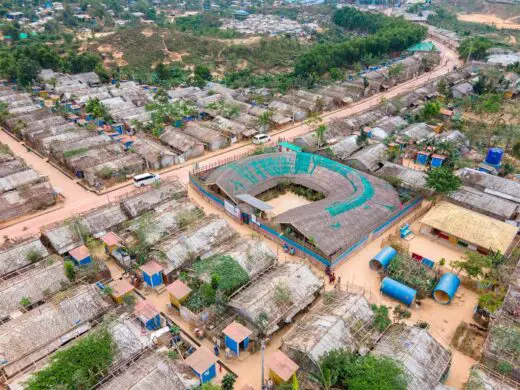
photograph © Aga Khan Trust for Culture / Asif Salman (photographer)
Community Spaces in Rohingya Refugee Response
A Bangladeshi Aga Khan Award for Architecture Winner:
Bait Ur Rouf Mosque, Dhaka
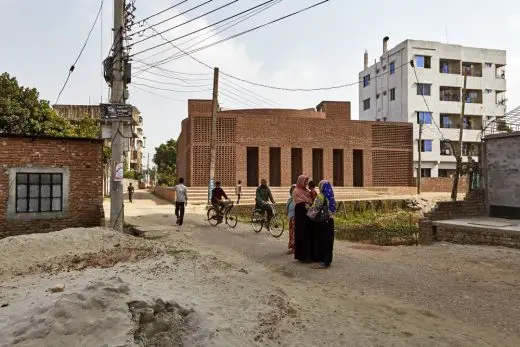
photo : AKTC / Rajesh Vora
Bait Ur Rouf Mosque Dhaka Building
Friendship Centre, Gaibandha
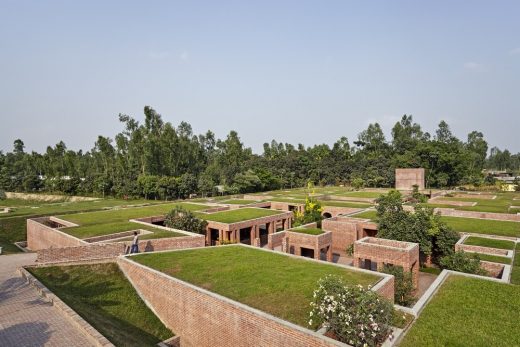
photo : AKTC / Rajesh Vora
Friendship Centre Building in Bangladesh
Dhaka Buildings
Dhaka Buildings
Infrastructure System for Dhaka Bangladesh
Architecture in India
Indian Architecture Designs – chronological list
New Delhi Architecture Tours by e-architect
Three Trees House in New Delhi
Design: DADA & Partners, architects
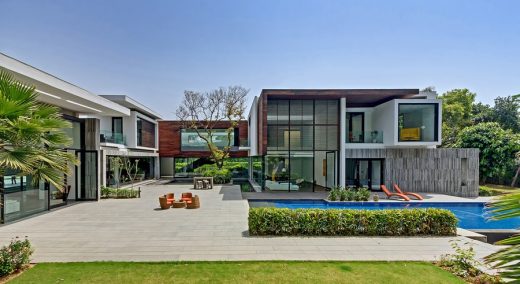
photograph : Ranjan Sharma / Lightzone India
Three Trees House in New Delhi
Indian Architect : contact details
Comments / photos for the Sustainable Inner-City Campus in Bangladesh design by WOHA page welcome

